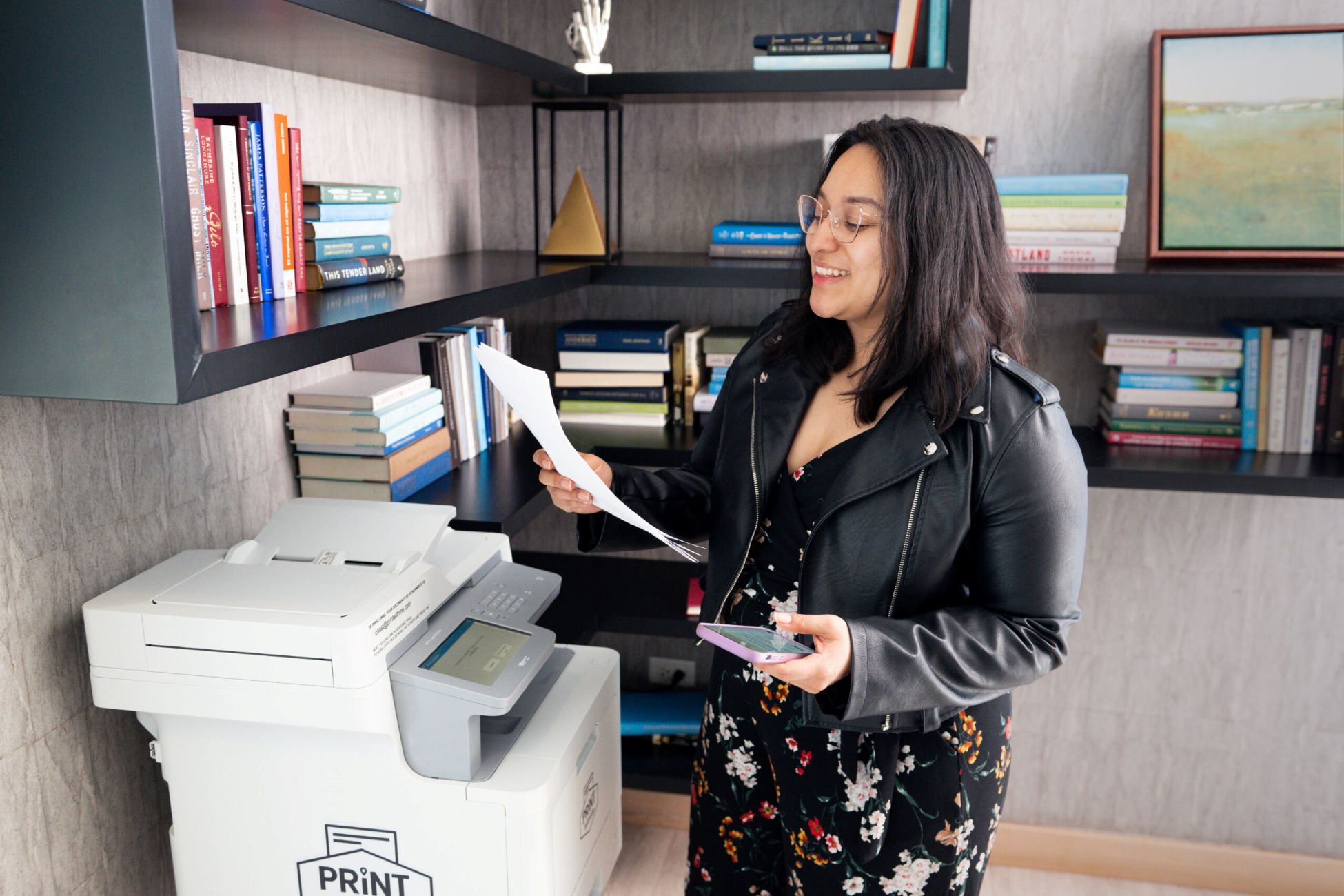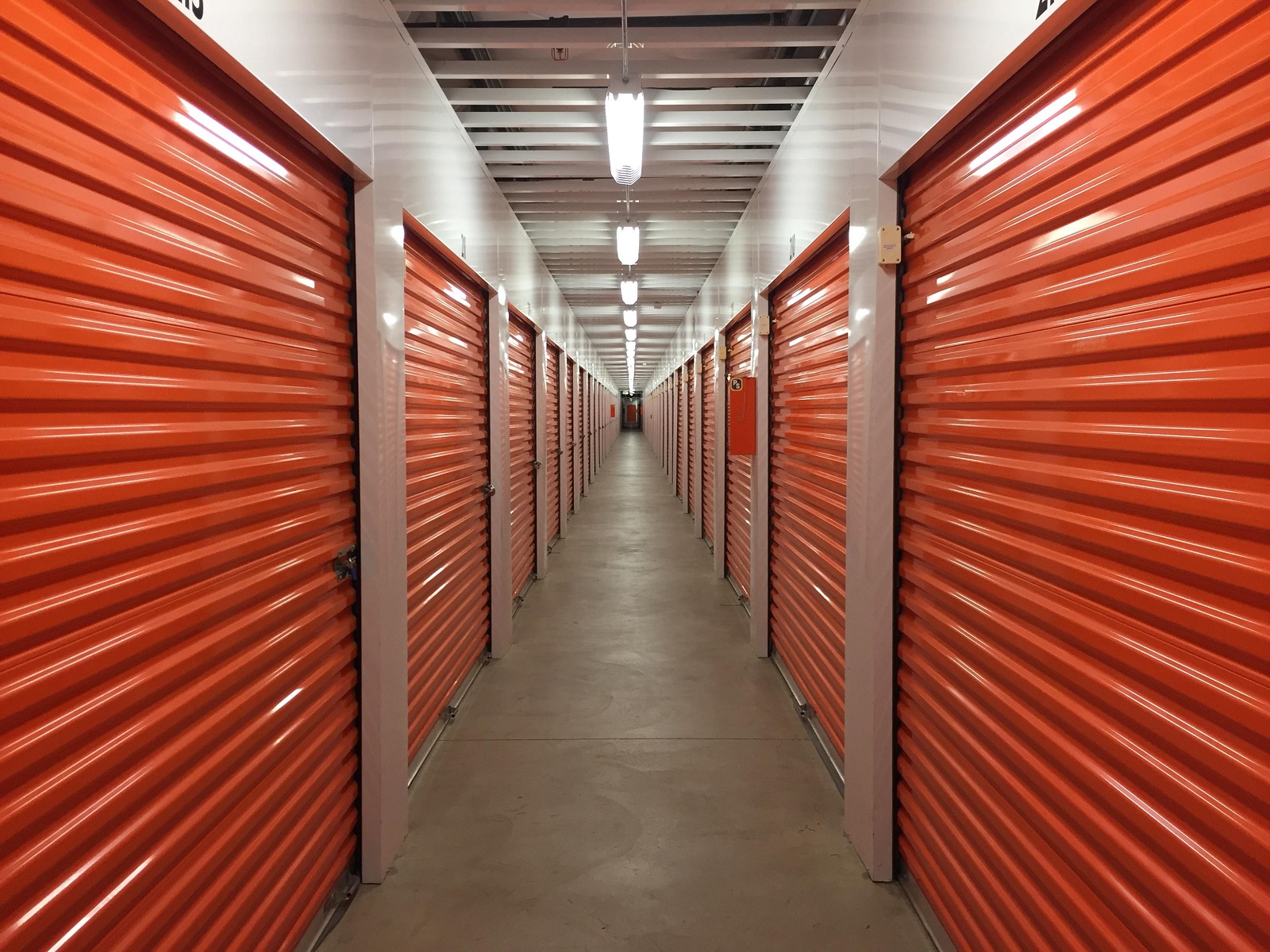Home>Technology>Smart Home Devices>Inkless Printer: How Does It Work


Smart Home Devices
Inkless Printer: How Does It Work
Published: January 6, 2024
Discover the innovative technology behind inkless printers and their role in smart home devices. Learn how these devices work and their benefits for your smart home setup.
(Many of the links in this article redirect to a specific reviewed product. Your purchase of these products through affiliate links helps to generate commission for Storables.com, at no extra cost. Learn more)
Introduction
Welcome to the fascinating world of inkless printers! In today’s digital age, where technological innovations continue to revolutionize our daily lives, inkless printers stand out as a remarkable and eco-friendly solution for printing needs. This article delves into the intriguing realm of inkless printers, exploring their functionality, advantages, and diverse applications.
As we embark on this exploration, prepare to be captivated by the ingenuity behind inkless printing technology and the myriad ways it is reshaping the printing landscape. Whether you are a tech enthusiast, a sustainability advocate, or simply curious about cutting-edge innovations, the insights presented here are sure to pique your interest and expand your understanding of this innovative printing solution.
Key Takeaways:
- Inkless printers use heat-activated paper to create prints without ink or toner, making them eco-friendly, cost-effective, and ideal for various industries.
- From retail to healthcare, inkless printers produce durable, smudge-resistant prints, revolutionizing printing with their efficiency and sustainability.
Read more: How Does A Resin Printer Work
What is an Inkless Printer?
An inkless printer, also known as a thermal printer or direct thermal printer, is a revolutionary printing device that eliminates the need for traditional ink or toner cartridges. Instead of relying on ink or toner, these printers utilize a special type of thermal paper that reacts to heat, producing high-quality prints without the mess and expense associated with conventional printing methods.
Unlike traditional printers that rely on ink or toner to transfer images and text onto paper, inkless printers employ a heat-sensitive paper that darkens when exposed to the printer’s thermal printhead. This innovative process results in crisp, durable prints that are resistant to fading and smudging, making inkless printers an ideal choice for a wide range of applications.
Furthermore, inkless printers are renowned for their simplicity and efficiency. By eliminating the need for ink or toner cartridges, these printers offer a hassle-free printing experience, reducing maintenance requirements and minimizing the environmental impact associated with traditional printing consumables.
With their ability to produce high-resolution prints using heat-activated paper, inkless printers have gained popularity in various industries, including retail, logistics, healthcare, and more. Their versatility and cost-effective operation make them a compelling choice for businesses and individuals seeking an efficient and sustainable printing solution.
Now that we have a foundational understanding of inkless printers, let’s delve into the intriguing mechanics behind their operation and explore the innovative technology that powers these cutting-edge devices.
How Does an Inkless Printer Work?
At the heart of an inkless printer’s operation lies the fascinating technology of thermal printing. This innovative method harnesses the power of heat to create high-quality prints on specially designed thermal paper, offering a sustainable and efficient alternative to traditional printing processes.
When a print command is initiated, the inkless printer’s thermal printhead selectively applies heat to the thermal paper, causing the heat-sensitive coating on the paper to darken in the areas where heat is applied. This precise application of heat results in the formation of images, text, or graphics on the paper, producing sharp and durable prints without the need for ink or toner.
The thermal paper used in inkless printers is engineered with a coating that reacts to heat, ensuring that the desired content is accurately transferred onto the paper with exceptional clarity and precision. This process eliminates the complexities and potential issues associated with traditional ink-based printing, such as smudging, drying out of ink cartridges, and the environmental impact of ink disposal.
Furthermore, the simplicity and reliability of thermal printing technology contribute to the overall efficiency of inkless printers. The absence of ink or toner cartridges streamlines the printing process, reducing maintenance requirements and operational costs while minimizing waste. This eco-friendly approach aligns with the growing emphasis on sustainability and responsible resource utilization in modern printing practices.
It’s important to note that inkless printers are capable of producing monochromatic prints, typically in black or grayscale, making them well-suited for applications that prioritize clarity and longevity. While they may not support full-color printing, inkless printers excel in generating high-resolution, smudge-resistant prints that are ideal for various professional and personal uses.
As we unravel the inner workings of inkless printers, it becomes evident that their reliance on thermal printing technology represents a significant leap forward in the evolution of printing solutions. The seamless integration of heat-activated paper and precision thermal printheads underscores the ingenuity and practicality of inkless printers, positioning them as a compelling choice for modern printing needs.
When using an inkless printer, make sure to use the correct type of paper that is compatible with the printer. The paper is specially coated to react with the heat from the printer, so using the wrong type of paper may result in poor print quality.
Advantages of Inkless Printers
Embracing inkless printers brings forth a myriad of compelling advantages that cater to diverse printing requirements while aligning with sustainability and efficiency goals. Let’s explore the notable benefits that set inkless printers apart from traditional ink-based printing solutions:
- Eco-Friendly Operation: Inkless printers eliminate the need for ink or toner cartridges, significantly reducing the environmental impact associated with traditional printing consumables. This eco-friendly approach contributes to sustainable printing practices and minimizes waste generation.
- Cost-Effective Printing: By bypassing the expense of ink or toner cartridges, inkless printers offer a cost-effective printing solution, reducing operational expenses for businesses and individuals. The absence of consumable cartridges translates to long-term savings and streamlined printing costs.
- Low Maintenance Requirements: Inkless printers boast simplified maintenance needs, as they do not rely on intricate ink delivery systems or cartridge replacements. This reduces downtime and operational disruptions, allowing for consistent and efficient printing performance.
- Smudge-Resistant Prints: The heat-activated paper used in inkless printers yields prints that are resistant to smudging and fading, ensuring the longevity and durability of printed content. This characteristic is particularly valuable for applications that require archival-quality prints.
- Rapid Printing Speeds: Inkless printers are renowned for their swift printing capabilities, delivering prints with minimal processing time. This rapid printing speed enhances productivity and efficiency, making inkless printers a valuable asset in time-sensitive printing scenarios.
- High-Resolution Output: Leveraging thermal printing technology, inkless printers produce high-resolution prints with exceptional clarity and precision. The resulting prints exhibit sharp details and crisp text, meeting the demands of professional and personal printing needs.
- Versatile Applications: Inkless printers find applications across diverse industries, including retail, logistics, healthcare, and more. Their versatility makes them suitable for generating labels, receipts, shipping documents, medical records, and various other printed materials.
These advantages collectively position inkless printers as a forward-thinking and practical choice for individuals and businesses seeking efficient, sustainable, and high-quality printing solutions. By harnessing the innovative technology of thermal printing, inkless printers continue to redefine the printing landscape, offering a compelling alternative to traditional ink-based printing methods.
Applications of Inkless Printers
The versatility and efficiency of inkless printers pave the way for a wide array of applications across various industries and everyday scenarios. From retail environments to healthcare facilities and beyond, inkless printers play a pivotal role in delivering reliable, high-quality prints for diverse purposes. Let’s explore the multifaceted applications of inkless printers:
- Retail and Point-of-Sale (POS) Systems: Inkless printers are integral components of POS systems in retail settings, facilitating the printing of receipts, invoices, and transaction records. Their rapid printing speeds and smudge-resistant prints ensure seamless customer transactions and accurate documentation.
- Logistics and Shipping: In the logistics and shipping industry, inkless printers are utilized for generating shipping labels, packing slips, and tracking documents. Their efficiency, durability, and cost-effective operation make them indispensable tools for streamlining shipping processes and maintaining accurate records.
- Healthcare and Medical Records: Inkless printers are employed in healthcare facilities for printing patient wristbands, medical labels, prescription labels, and administrative documents. The high-resolution output and durability of inkless prints contribute to accurate patient identification and streamlined record-keeping.
- Warehouse and Inventory Management: Within warehouse environments, inkless printers facilitate the printing of barcode labels, inventory tags, and asset labels. Their rapid printing speeds and reliable performance support efficient inventory management and tracking operations.
- Field Services and Mobile Printing: Inkless printers are utilized in field service scenarios, enabling on-the-go printing of service reports, work orders, and maintenance records. Their portability and hassle-free operation make them ideal for mobile printing applications in diverse service-oriented industries.
- Event Ticketing and Admissions: Inkless printers are employed for printing event tickets, admission passes, and wristbands at entertainment venues, theme parks, and sporting events. Their rapid printing capabilities and smudge-resistant prints ensure seamless entry management and guest experience.
- Education and Classroom Resources: In educational settings, inkless printers are utilized for printing classroom materials, student badges, and educational resources. Their cost-effective operation and high-resolution output support efficient educational administration and resource distribution.
These diverse applications underscore the adaptability and reliability of inkless printers across a spectrum of industries and operational contexts. Their ability to deliver durable, high-quality prints with efficiency and sustainability positions them as indispensable tools for modern printing needs, catering to a wide range of professional and personal requirements.
Read more: How Does A Laserjet Printer Work
Conclusion
As we conclude our exploration of inkless printers, it becomes evident that these innovative devices represent a significant leap forward in the realm of printing technology. By harnessing the power of thermal printing, inkless printers offer a sustainable, efficient, and cost-effective alternative to traditional ink-based printing solutions. Their ability to produce high-resolution prints without the need for ink or toner cartridges underscores their practicality and versatility across diverse applications.
From retail and logistics to healthcare, education, and beyond, inkless printers play a pivotal role in delivering reliable, smudge-resistant prints for various operational and administrative needs. Their rapid printing speeds, low maintenance requirements, and eco-friendly operation make them indispensable tools in modern workplaces and everyday scenarios.
Furthermore, the advantages of inkless printers, including their eco-friendly operation, cost-effectiveness, and high-resolution output, position them as compelling choices for businesses and individuals seeking sustainable and efficient printing solutions. As the demand for eco-conscious and streamlined printing practices continues to grow, inkless printers stand out as innovative allies in meeting these evolving needs.
In essence, inkless printers exemplify the convergence of cutting-edge technology, environmental responsibility, and practical functionality. Their seamless integration of thermal printing technology and heat-activated paper showcases the ingenuity and forward-thinking approach that defines the modern printing landscape.
As we look to the future, the widespread adoption of inkless printers is poised to further revolutionize the way we approach printing tasks, offering a sustainable and efficient path forward for businesses, organizations, and individuals alike. Whether in retail environments, healthcare facilities, educational institutions, or beyond, the impact of inkless printers continues to resonate, shaping a more sustainable and streamlined approach to printing needs.
In closing, the journey through the realm of inkless printers has illuminated their transformative potential and the myriad benefits they bring to the forefront of modern printing practices. With their eco-friendly operation, versatile applications, and remarkable efficiency, inkless printers stand as beacons of innovation, paving the way for a more sustainable and effective approach to printing in the digital age.
Frequently Asked Questions about Inkless Printer: How Does It Work
Was this page helpful?
At Storables.com, we guarantee accurate and reliable information. Our content, validated by Expert Board Contributors, is crafted following stringent Editorial Policies. We're committed to providing you with well-researched, expert-backed insights for all your informational needs.















0 thoughts on “Inkless Printer: How Does It Work”